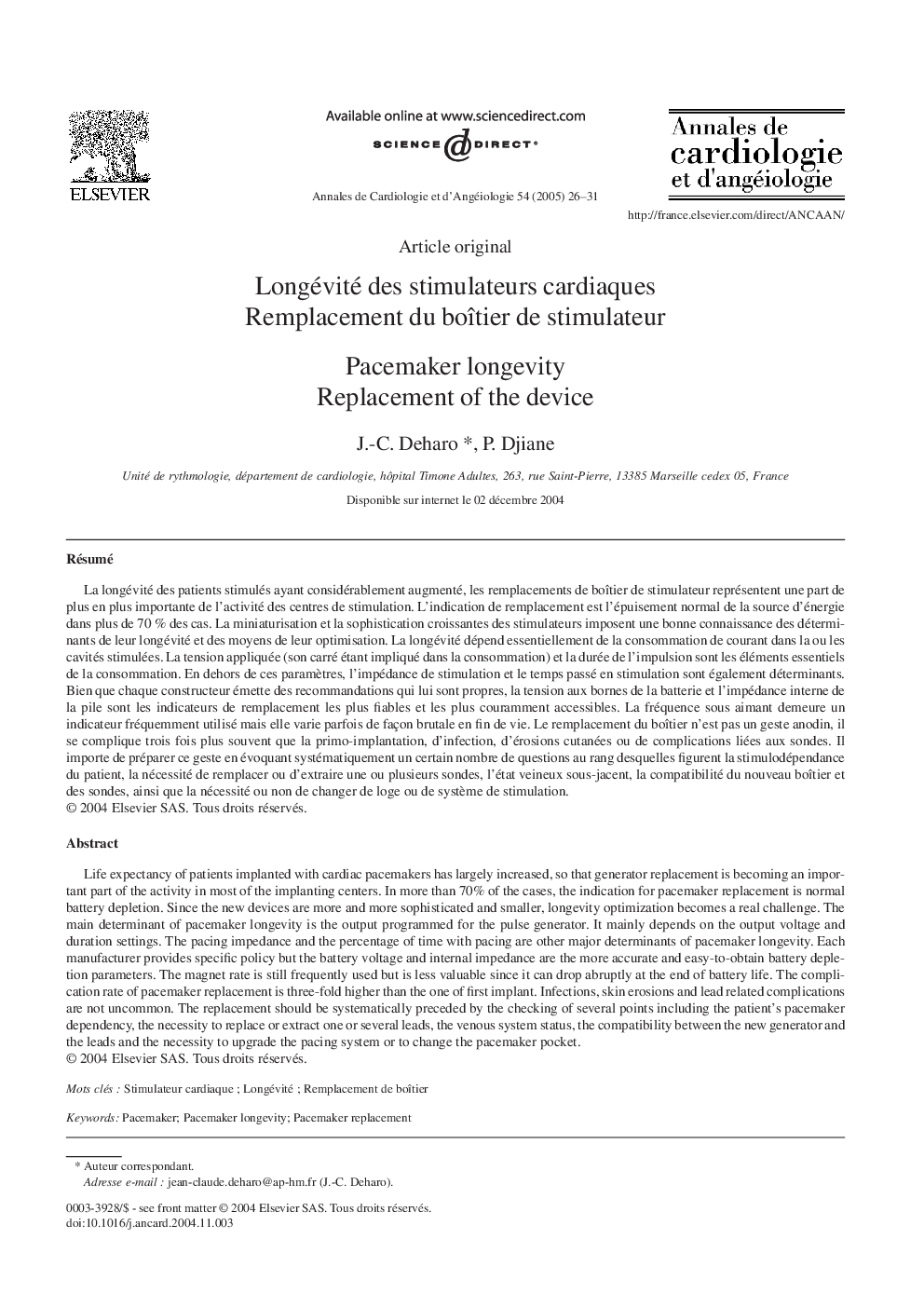| Article ID | Journal | Published Year | Pages | File Type |
|---|---|---|---|---|
| 9157242 | Annales de Cardiologie et d'Angéiologie | 2005 | 6 Pages |
Abstract
Life expectancy of patients implanted with cardiac pacemakers has largely increased, so that generator replacement is becoming an important part of the activity in most of the implanting centers. In more than 70% of the cases, the indication for pacemaker replacement is normal battery depletion. Since the new devices are more and more sophisticated and smaller, longevity optimization becomes a real challenge. The main determinant of pacemaker longevity is the output programmed for the pulse generator. It mainly depends on the output voltage and duration settings. The pacing impedance and the percentage of time with pacing are other major determinants of pacemaker longevity. Each manufacturer provides specific policy but the battery voltage and internal impedance are the more accurate and easy-to-obtain battery depletion parameters. The magnet rate is still frequently used but is less valuable since it can drop abruptly at the end of battery life. The complication rate of pacemaker replacement is three-fold higher than the one of first implant. Infections, skin erosions and lead related complications are not uncommon. The replacement should be systematically preceded by the checking of several points including the patient's pacemaker dependency, the necessity to replace or extract one or several leads, the venous system status, the compatibility between the new generator and the leads and the necessity to upgrade the pacing system or to change the pacemaker pocket.
Related Topics
Health Sciences
Medicine and Dentistry
Cardiology and Cardiovascular Medicine
Authors
J.-C. Deharo, P. Djiane,
